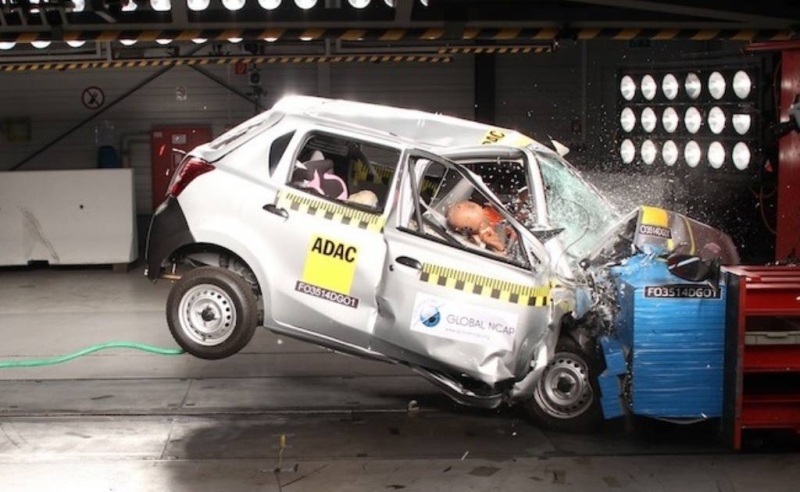India is finally set to introduce automotive crash safety tests from October 2017.
After what seems like an eternity, India will finally have mandatory car crash safety tests for all new cars from Octover 2017; a welcome bit of news on the first day of the new year. This move comes from two separate instances of Indian-made cars miserably failing the Global NCAP crash tests. The two tests, and there are just two for now, are the front crash and side impact tests. For now, rear-impact, angular and roll-over tests have received no mention, however, it indicates baby steps in the right direction.
The front crash test will be performed at 56 km/h, while the side impact test will see a speed of 50 km/h. All new cars as of 1st October 2017 will have to comply, whereas existing models at the time have two more years to comply, until October 2019. The crash tests will be allowed to be performed by manufacturers at either domestic or international facilities.
Manufacturers have raised concerns that the introduction of ABS with EBD, child door-lock reminders, electronic stability control and airbags will push car prices up by up to 30%. However, it’s only a matter of getting accustomed to in a market utterly deprived of basic safety. A major percentage of the masses travel with complete disregard for not just their own, but also the safety of others, putting the lives of several road users at risk. The mindset has to be changed. However, even today, an educated mind is aware of the implications of safety features in a careless world, and would not fret in investing a little more to be safer. What is the point of a multi-lakh insurance policy if your car doesn’t do a thing to save you?
There are several manufacturers who offer even large, so-called premium saloons without simple basic safety features like full or adjustable headrests at the front and rear. In Europe, a car model is not passed for sale until it is equipped with anti-lock brakes, stability/traction control and airbags for all rows of seats, and meets the basic safety requirement of the Euro NCAP (New Car Assessment Programme). For example, the subcompact Volkswagen up! is loaded to the gills with safety equipment and even features autonomous braking. Yes, there will be expenses, but there is also the matter of economies of scale. If every single car were to feature ABS, stability control and airbags, it is a major investment to re-align the production line to cater to these installations, but simultaneously, manufacturers will realise that people need safe cars, and will spend a little more when their peace of mind is assured. The delay for now seems to be a matter of complacency, more than anything else. ‘If it’s selling, let it sell’. Wrong!
We would love to see a shift of the mindset, but that seems like it would take a while. However, small steps in the right direction and spreading the awareness are the only ways to make that paradigm shift. Here’s to safer, more efficient and comfortable motoring.
Story: Jim Gorde




















Leave a Reply